#Counter-Strike
Explore tagged Tumblr posts
Text
No Teammates? No Problem. Solo Banana Flash on Inferno 🔥
#cs2#counterstrike 2#counter-strike 2#counterstrike2#counterstrike#csgo#cs:go#counter-strike#gaming#esports#valve#steam
84 notes
·
View notes
Text

finally remembered my account password,
11 notes
·
View notes
Text
Minecraft's Painting Crossovers
Counter-Strike

King's Quest and Space Quest

The Way of the Exploding Fist
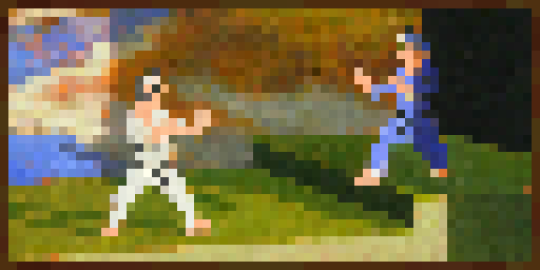
International Karate +
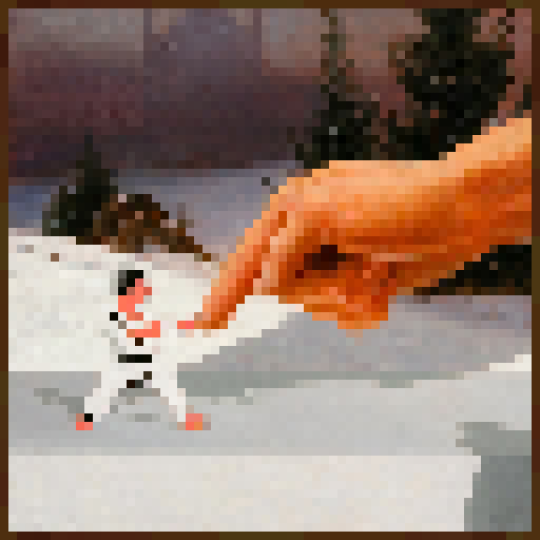
Donkey Kong

#Minecraft#Minecraft Paintings#Counter-Strike#Counter Strike#King's Quest#Space Quest#The Way of the Exploding Fist#International Karate +#Donkey Kong
11 notes
·
View notes
Text
Can't believe the thing that convinced me to actually fucking. Get Counter-Strike Source was the fact it's in a bundle with the weird singleplayer spinoffs that I kinda want to check out. Can't believe Valve bribed me to buy a game I don't care about by selling it with two that I actually want to.
Plus I can now mount it to GMod, and there were some other games I wanted that I also got.
#counter-strike#counter-strike source#counter-strike condition zero#the other games i got were e.y.e divine cybermancy (because it looks like My Kinda Shit™)#and shooty shooty robot invasion (because it looks silly and fun)
5 notes
·
View notes
Text

Counter-Strike
42 notes
·
View notes
Text
TRIGGER WARNING: Beer drinking






Drawings of Early Early Oxenfree, from latest to earliest! The earliest drawing of Earl is from 7th of January, and the latest drawing of Earl is from 24th of February!
And yes! I drew Current Early interacting with '09 Early, because he has such appealing design.
And yeah, once again, Early Early Oxenfree, belongs to @dreammeiser for project 'Dream Along with Me'. Oh, and the cameo? That's Funshine Saturday, a character by ABC to promote Saturday mornings, so I thought why not make him Earl's buddy to drink with?
2 notes
·
View notes
Text
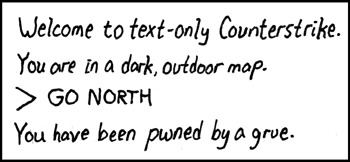
I'm sure a discussion of the reason for the disappearance of adventure games in favor of RPGs would be fascinating.
Pwned [Explained]
#xkcd#pwned#xkcd 91#counter-strike#text adventures#adventure games#the death of the adventure game#2000s#2006
50 notes
·
View notes
Text
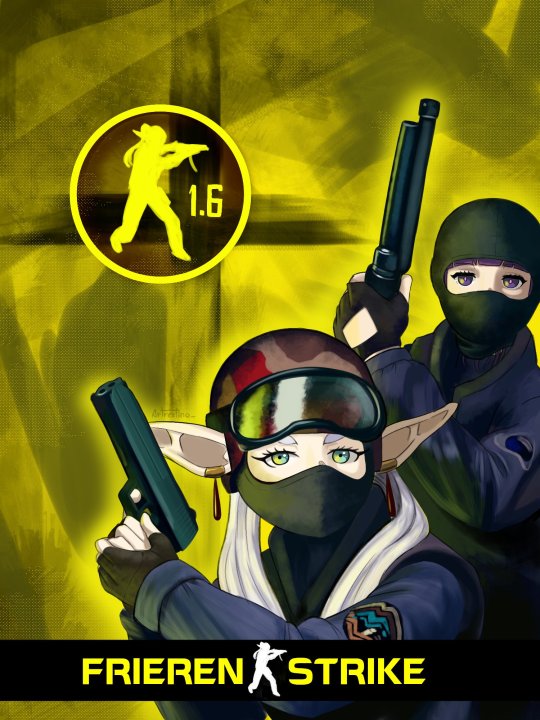
Artist By Artrextino
#sousou no frieren#frieren: beyond journey's end#frieren at the funeral#frieren#counter-strike#artist on twitter#art
12 notes
·
View notes
Text
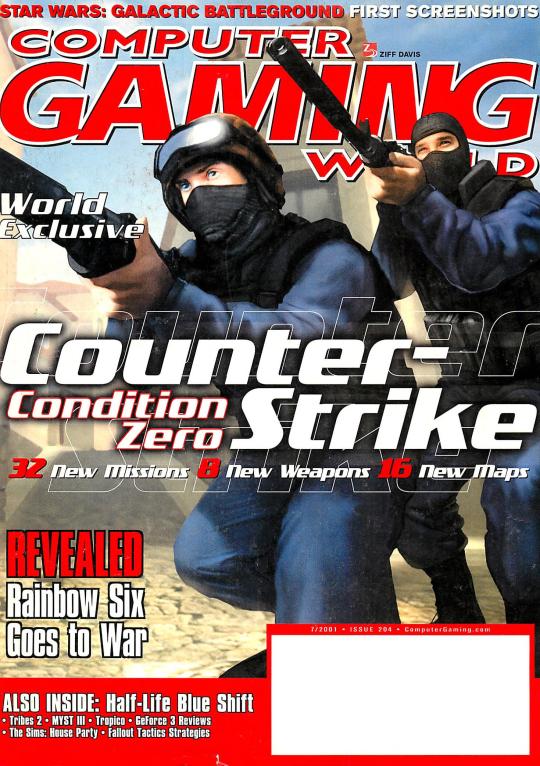
Computer Gaming World July 2001
on the Internet Archive
15 notes
·
View notes
Text
decenty Hides in PLAIN SIGHT with This Boost 💨
#cs2#counterstrike 2#counter-strike 2#counterstrike#counter-strike#csgo#cs:go#gaming#esports#valve#steam
58 notes
·
View notes
Text
A Brief and Depressing History of ESWC
Quick disclaimer. I originally started writing this as a script for some kind of video essay or something like that. I kinda chickened out in the end, and also I know very little about making videos, so here it is as 2.5k word essay instead.
Unless you’re old like me, you might not know that Esports World Cup is actually heading into its third decade of existence. Things have changed considerably in the 21 years since its first event in 2003, not least its ownership, but the entity known as ESWC is not, strictly speaking, new.
What I don’t want to do today is get into the sports washing issue. Plenty of others have covered that already and it’s too complicated a topic to try and squeeze into this piece. Suffice to say, while I’m undecided on where I stand, I fully understand why people many of you will be giving this event a miss.
Today I want to delve into the roller-coaster history of a tournament organiser that is near and dear to my heart. In 2005 I attended my first international event as a journalist – the third ever ESWC finals in Paris. I was awestruck by the entire week, from being in a foreign city alone for the first time to the fact that my nerdy hobby could really host an event of this size. Looking back at photos of the venue, the latter part of that seems particularly quaint. Although the stage was extremely cool, I reckon there were maybe a couple of thousand spectators at most.
Still, in 2005 that was huge. The main competitor at the time, Cyber Athlete Professional League (CPL), pretty much just didn’t have an in-person spectatorship at all to begin with and when they did try to attract fans, results were mixed. Back then, Esports was a far cry from AR pop groups performing opening ceremonies for a stadium of thousands and a stream viewership in the millions. World Cyber Games (WCG), which is theoretically still in existence but hasn’t run a tournament since 2020,was the closest thing to a modern event. It had Olympics-style branding, an opening ceremony and even its own theme song, but its viewership paled in comparison to today’s events. ESWC, in the early 2000’s, was a moderately large fish in pretty small pond.
Despite many changes down the years, one thing that has remained the same about under the new regime is the multi-game format. When I went to Paris in 2005, I mostly covered Warcraft 3 despite being on GotFrag’s staff as a Counter-Strike writer at the time. There was also Quake 3, Unreal Tournament, Pro Evolution Soccer and more. CS was definitely The Main Event, but every game had its final played on the main stage. Every game had its moment in the spotlight. ESWC was even ahead of the curve in having a women’s CS tournament, and I remember my American colleagues being hyped for Girls Got Game making an American CS double, with Complexity winning the men’s event.
Looking back, I wonder how much of this was out of necessity. With so much less money coming into esports in its early days, perhaps it made more financial sense to host multiple games in one venue, in order to maximize both viewership and participation while only needing to pay for one venue. It’s no coincidence that most tournaments back in the day were attached to other attractions. Dreamhack, obviously, was always attached to a BYOC event, but other organises did similar things. Even as late as 2010, I remember wading through thousands of people, past the hundreds of booths that made up CeBIT to reach the ESL IEM stage.
Fun aside: this was the event where Azael became a “literal world champion,” after winning the World of Warcraft tournament with Evil Geniuses. I will never not cringe when I think about how inappropriately quickly I leapt on him and his teammates to ask for an interview after the game. I didn’t even wait for them to finish celebrating their victory. Azael, reasonably, told me to give them a minute. I have never watched any of my interviews from this event, and I don’t think SK’s site has them hosted any more – what a pity.
By the way, if this sounds weird now, that’s because it was. I had a press pass, sure, but I was sitting in the crowd of a couple of hundred people and simply wandered up to the stage without needing to show it to anyone.
I went back to ESWC in 2006, solely as a WC3 guy now. Ironically, I barely recall the WC3 final at all, but the MIBR vs Fnatic CS final turned out to be a banger. To those of us on the outside, ESWC seemed to be tootling along just nicely but capitalism demands growth and “tootling along” was never going to be enough in the long run.
That was my last in-person event for a few years. I left GotFrag a few months after it got bought by Major League Gaming in 2007. Similarly, ESWC soldiered on as-is for a while, but the organisers had to switch things up. They changed formats in 2008, moving to something closer to the IEM and Blast Pro series formats we know today but this would only last one year. In 2009, under the weight of a global financial crisis, ESWC closed its doors for, erm, like a year.
They weren’t the only casualty, and Counter-Strike’s love-hate relationship with CPL ended in early 2008. An official statement read “The current fragmentation of the sport, a crowded field of competing leagues, and the current economic climate have prompted the CPL to suspend its pro-tournament operations.” Matthieu Dallon, founder of ESWC, echoed this sentiment in an interview with Fragster.de (https://complexity.gg/matthieu-dallon-interviewed-on-eswc-bankruptcy/ not the og link): “We have contacted several dozen of potential partners, big and small brands. We always received the same answer: Our stock value is in free fall, the sales decline, we are going to lose money this quarter, nobody knows when all will restart, so we have to reduce all our marketing and communication budgets, we have to target our direct consumers, and we have to cut all special budgets as sponsoring or alternate advertising.”
Other leagues such as ESL and Dreamhack hung on, changed their models and adapted. They became hosts and organisers for the likes of Blizzard and Valve, eventually becoming more of a media company than a league. But when ESWC returned in 2010, it more-or-less picked up where it left off: multiple games (including WC3, surprisingly) and a spectacular venue in Disneyland Paris.
In 2011, my beloved WC3 was replaced by Starcraft II and ESWC attached itself to Paris Games Week. This meant a change of season. Until now, ESWC had always been a summer spectacle. Paris Games Week took place in late October – presumably to give Parisians something to do indoors during the miserable weather.
Still, the event continued to be a fairly important part of the esports calendar. We still hadn’t quite reached the era of The Major and there was plenty of room at the table for competition. Although my own interest in many of the included titles was waning during this period, ESWC looked to be going strong. They took the move to CS:GO and DOTA2 in their stride and added more and more -Mania games. ESWC had always been one of the strongest proponents of Trackmania, but they even added Shootmania for a few years towards the end. Remember Shootmania? Kinda? Yeah, same.
It wasn’t until 2014 that things started to get silly. Call of Duty gets top billing on the official ESWC page for that year. This is the first time that anything other than Counter-Strike sits atop the list of champions, which is a subtle but important change. But okay, people like COD, whatever. It made sense to add another popular FPS game.
Just Dance, though? I think this is where ESWC’s reliance on other parties started to become an issue. Just Dance is an Ubisoft game, developed by Ubisoft Paris specifically. ESWC always had strong ties to its home country of France and while Ubisoft’s Trackmania series made a lot of sense as a competitive game, dancing, just kinda doesn’t. Well, I guess it did go on to be part of the Olympic Series, so joke’s on me, right?
Okay, maybe that’s a bit rude. If you like Just Dance then that’s great. I watched the highlights for this video and everybody looked like they were having a great time. But after so many years of pining for mainstream acceptance, the fact that the Olympics chose a dancing game that a lot of esports fans had never even heard of (myself included), instead of CS or a MOBA of some kind was absurd. Viewers thought so, too – all 800 of them. Yeah, according to esports charts (https://escharts.com/tournaments/other/olympic-esport-series-finals-just-dance) the peak viewership for Just Dance at the Olympics was 777 people.
Look, I’m not suggesting that ESWC immediately shrunk in 2015 because of Just dance and Call of Duty, but they played their part. From the outside looking in, their seems to have been a lack of direction and these two games were part of that. Or rather, there was a direction, but that direction was advertising Ubisoft products. ESWC spread itself too thin at a time when single-title leagues and tournaments were quickly becoming the norm.
ESWC did try its hand at this in 2015, running a COD-only tournament in May and a CS-only event in July (though they do deserve credit for continuing to support female Counter-Strike), but in October they were back to their Olympics-style approach. The list of games at the final event of 2015 paints a picture: FIFA, Women’s LoL (but no men), Trackmania, Shootmania and Just Dance. You might generously call it an eclectic mix, but I’d argue it’s a collection of games nobody else wanted.
ESWC’s website lists a highlight for every year. Usually it’s an iconic moment of game play, sometimes it’s the first use of a game on such a big stage. Tellingly, in 2015, they list the creation of France Esports. Sure, this was a big deal (probably), and it was headed up by Matthieu Dallon of ESWC, but this comes across as a tacit admission that nothing important happened at their own tournaments during that whole year.
In 2016, the spiral into irrelevancy was well underway. Another COD tournament in May was followed by a downsized October tournament. CS was back on the menu, but the list of entrants paints an ugly picture. Alternate Attax beat LDLC in the final – two teams who, in 2016, had no business being in an international final. They did have players who would go onto bigger things, but Attax has never qualified for a Major, before or since. They earned their victory, but it came against a very weak field.
Even more damning, though, is the fourth and final game on the list for that year: Clash Royale. The shark had well and truly been jumped. You can never recover your credibility after you take money from mobile games.
ESWC stumbled on for a few more years after that, but the list of titles became more and more muddled while the CS tournament became populated by fewer and fewer big names. ESWC Africa took place in December of 2018 – a Counter-Strike only tournament that was the last thing ESWC ever ran. While it was cool to see organisers creating tournaments outside of the usual esports hotbeds, it’s no surprise that ESWC disappeared shortly after that.
But the universe had a different fate in mind for ESWC. In 2024, it is being brought back to life in a hideous experiment, worthy of any Gothic Horror. It will return as a shell of its former self, bathed in riches it never had in its previous life, but devoid of all the glory and all the good will it had created over the years.
And yet, ESWC being bought out is nothing new. Behind the scenes, ownership changed several times of the years. Even the name was switched to Esports World Convention at some point – a fact I only learned during my research for this piece. Starting out as an expansion of Ligarena’s domestic LAN tournaments in France, Games-Solution bought the brand in 2009. They passed things onto Oxent in 2011 until Oxent itself was bought out by Webedia in 2016.
What is particularly interesting here is that Matthieu Dallon was in charge of Oxent, too. Despite the bankruptcy of his previous company, he clearly wanted to make his dream of an esports Olympics a reality. He could have easily disappeared into some or other other mundane business and I assume he would have had offers to join other esports organisations, but we chose to resurrect ESWC instead.
And then he sold it to Webedia.
Webedia is a lot of things. A kind of smorgasbord of “online stuff,” featuring typically, deliberately nebulous “Web3” concepts such as “Content Production,” “IP Development” and “Brand Partnership.” If you rolled your eyes at any or all of these phrases, you’re not alone. Essentially, their main role seems to be managing streamers and talent but their reach goes much wider than that. Indeed, esports is only the third entry on their “Webedia Networks” page, below Movies and Gaming. This is the company behind LFL’s broadcasts, however, so they do remain relevant in the esports community, at least in France.
Oh, and they shill NFTs because of course they do.
Is it a coincidence that the year ESWC became part of a larger media empire is the same year they moved into mobile gaming? Probably not. Mobile games, whatever you think of them, do make a lot of money. There’s an Always Sunny scene for every occasion, isn’t there? What do companies like Webedia make? Money, Charlie, they make money.
Still, it’s clear in retrospect that this was the beginning of the end for ESWC. What had started out in 2003 as a passion project based on a love of esports had turned into just another media asset. Viewed in that light, it’s almost sort of fitting that it has now become a sportswashing project – a sad but common arc in today’s hyper-capitalist world. Anything with positive emotional attachment can and will be commodified, either for money or PR, or, more commonly, both. Yes, I’m looking at you, football.
I remember when I first started writing about esports, people always talked about “going mainstream” as though it was a good thing. As though being popular and making money was what made something legitimate or worthwhile. The closer we got to that goal, the worse it seemed to me. ESWC’s fate – a once-loved institution of a small community turned into a heartless advertising entity for an oil state – is about as damning an indictment of that as you could wish to find. The delicious irony in all of this is that ESWC will lose money, and this is by design, but it will also lose the legitimacy it once had. Nobody who used to love ESWC in the early 2000’s will care about its new zombie form and many of them will boycott it, myself included.
ESWC died years ago as far as I’m concerned. The event by the same name later this year is nothing but the reanimated corpse of something that used to be great. The only DNA the two share is their scattergun approach to game selection, but even this is a perversion of the original goal. The old ESWC had to cast its net wide in order to make ends meet. The new monstrosity is just willing to throw money at anything that will buy its owners some positive publicity – a drop in the ocean of its owner’s obscene wealth.
#ESWC#EWC#leagueoflegends#esports#counter-strike#CS2#Faker#sportswashing#esportswashing#lol#league#G2#fnatic#T1#team liquid#saudi arabia#esports history#warcraft#WC3#esports journalism
4 notes
·
View notes
Text
dailymotion
Neuralink's patient plays Counter-Strike 2 using his brain chip
#Neuralink#patient#Elon#brain#chip#games#play#Counter-Strike#Quadriplegic#says#super#impressed#with#device -#as#Musk#claims#MILLIONS#of#people#could#have#them#by#2034#is#now#able#video#using
2 notes
·
View notes
Text
CS:GO is now lost media
#sauceposting#counter-strike#counter-strike: global offensive#counter-strike 2#i dont even play csgo
10 notes
·
View notes
Text
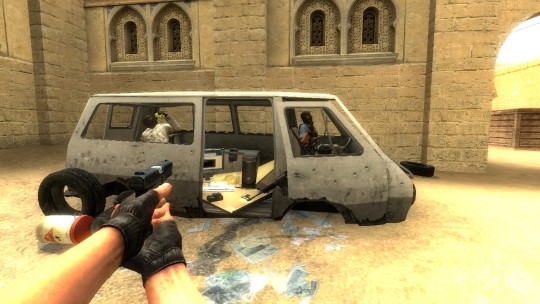
crime
4 notes
·
View notes

